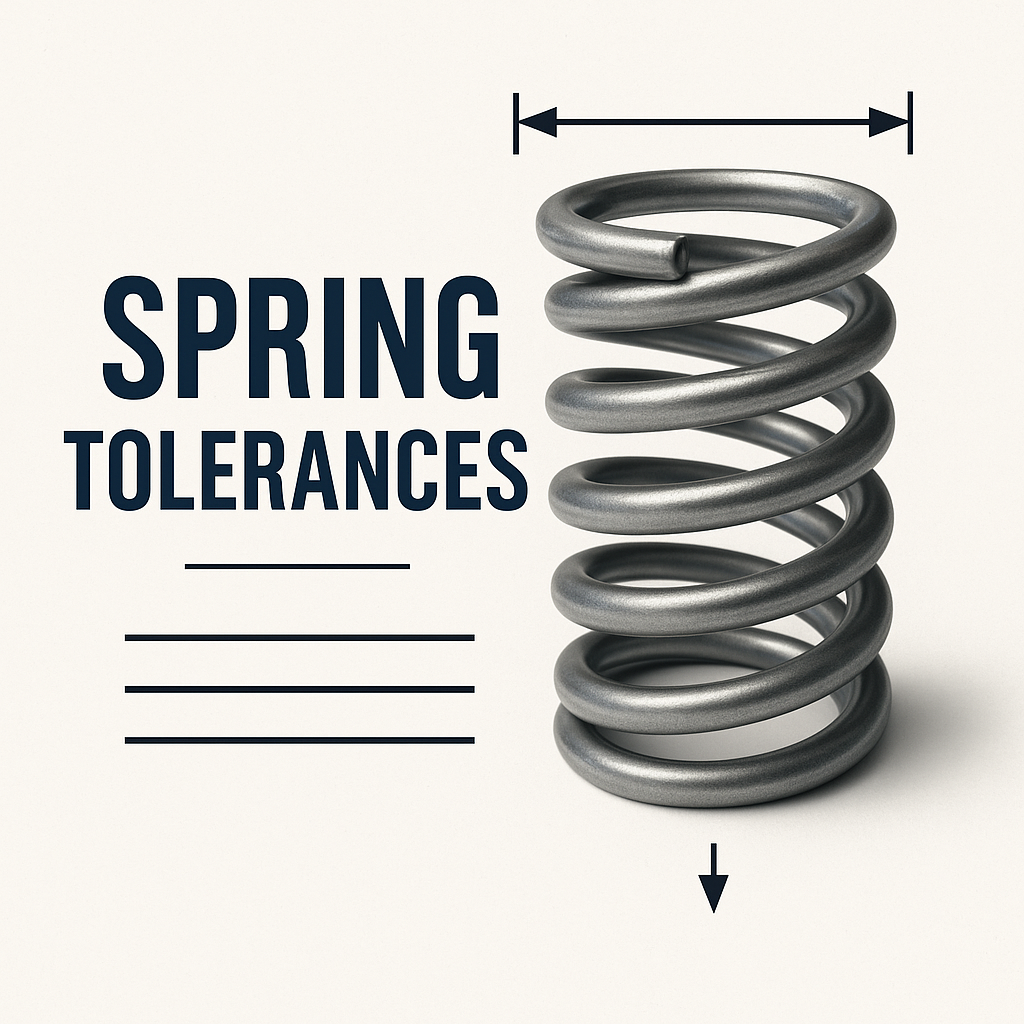When it comes to spring manufacturing, precision isn’t a luxury—it’s a necessity. Springs are often small parts doing big jobs: controlling motion, absorbing shock, maintaining tension, or applying force. If they’re even slightly out of spec, the performance of the entire system can suffer.
That’s where tolerances and quality control come into play.
What Are Tolerances in Spring Manufacturing?
In engineering terms, a tolerance defines the acceptable variation from a specified dimension. For springs, this might include:
- Wire diameter tolerance
- Outside diameter (OD)
- Free length
- Coil pitch
- Spring rate (force per inch of compression/extension)
- Load at a specific deflection
Even microscopic deviations can affect the spring’s fit, function, and fatigue life—especially in critical applications like medical devices, aerospace systems, or high-speed machinery.
Why Tight Tolerances Are Important
Springs operate under dynamic loads and often in constrained spaces. Tight tolerances ensure:
- Consistent force output across all units in a batch
- Reliable fit into assemblies or housings
- Predictable behavior under load, temperature, or motion
- Longer service life by avoiding overstrain or misalignment
For example, a compression spring that’s too long or too stiff might bottom out prematurely, while one that’s too soft could fail to hold parts in position.
How Tolerances Are Determined
Spring tolerances depend on several factors:
- Application requirements – High-precision assemblies (like valve systems or medical pumps) demand stricter tolerances.
- Material type – Some materials (like stainless steel) behave more consistently during coiling and heat treatment.
- Manufacturing process – CNC coiling offers higher precision than manual setups.
- Industry standards – Manufacturers often follow standards like ASME, SAE, or DIN 2095, which define tolerance classes for various spring types.
For example, standard tolerances for compression springs might allow ±10% variation in free length or ±15% in spring rate, unless otherwise specified.
Quality Control in Spring Production
Meeting those tolerances consistently takes more than just good machines—it takes a robust quality control (QC) process. Here’s what that typically includes:
1. Incoming Material Inspection
- Verification of wire diameter, tensile strength, surface condition
- Certificate of compliance (COC) from the supplier
- Random sampling for in-house validation
2. In-Process Monitoring
- Real-time measurement using laser micrometers, calipers, and digital probes
- Automated spring testers checking spring rate, load, and deflection
- Vision systems for surface inspection and dimensional accuracy
3. Final Inspection
- Statistical sampling based on batch size
- Go/No-Go gauges for key dimensions
- Force testing under simulated load conditions
Many manufacturers also provide SPC (Statistical Process Control) data with shipments, giving customers traceable proof of compliance.
Common Challenges (and How Pros Overcome Them)
Even with advanced equipment, spring tolerances can be affected by:
- Tool wear – Worn coiling mandrels or guides can skew results over time
- Heat treatment distortion – Springs may expand, contract, or warp during stress relief
- Material inconsistencies – Even high-quality wire can have minor batch variations
Experienced spring manufacturers account for this with:
- Regular machine calibration
- Pre-adjusted spring “overwind” to compensate for heat changes
- High-frequency QC checkpoints during and after coiling
The Cost of Getting It Wrong
In high-performance applications, out-of-tolerance springs can lead to:
- Equipment failures
- Assembly delays
- Warranty claims or recalls
- Safety risks
This is why it’s essential to work with a trusted spring manufacturer who not only understands tolerances, but has the systems in place to meet them every time.
Conclusion
Precision is at the heart of every successful spring. Tolerances ensure that springs behave exactly as expected—cycle after cycle, part after part. Whether you need thousands of identical compression springs or a custom torsion spring for a prototype, quality control isn’t just a step in the process—it’s the glue that holds everything together.

